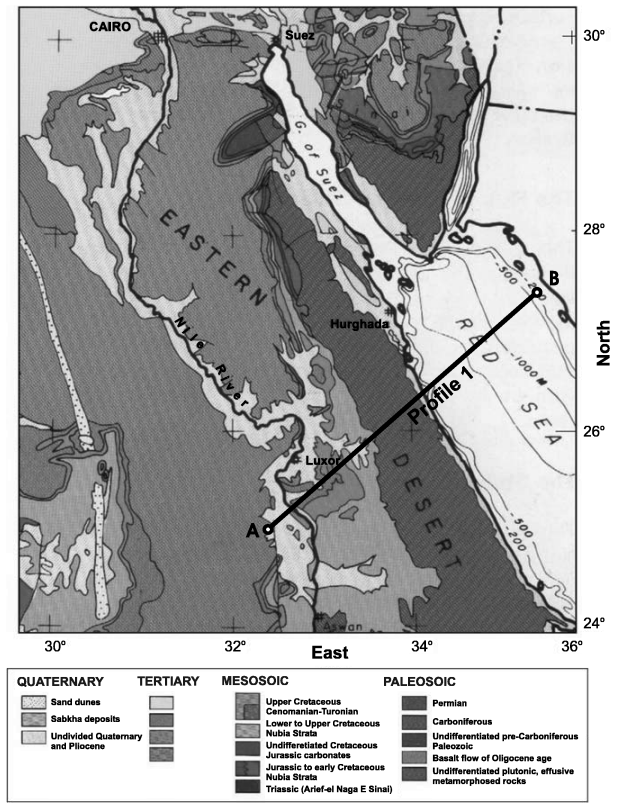Earth Crust and Lithosphere
Research devoted to the structure and properties of the Earth Crust and Lithosphere is based on forward density modeling and integrated modeling of gravity anomalies, geoidal undulations, topographic heights and surface heat flow, on 2D transects or in 3D, making use of all possible geophysical and gelogical constraints such as interpretations of reflection and refraction seismics, geothermics, geomorphology, existing tectonic and geological interpretations. We focus on the Carpatho-Pannonian region.
Integrated lithospheric modelling in the Red Sea area
Written by Jana Dérerová | Published in: Earth Crust and Lithosphere |Radwan A. H. A. 1, Issawy E. A. 1, Dérerová J. 2, Bielik M. 2,3, Kohút I. 2
1National Research Institute of Astronomy and Geophysics
2Geophysical Institute of the Slovak Academy of Sciences
3Department of Applied and Environmental Geophysics, Faculty of Natural Sciences, Comenius University3
Introduction
The Red Sea is considered to be a typical example of a newly formed ocean, therefore, a great number of studies discuss its evolution and development especially in relationship to continental rifting, initiation of sea floor spreading and plate tectonics. We focused on the 2D integrated geophysical modelling with a goal to calculate an original model of the lithospheric structure and lithosphere thickness along Profile 1 (Fig. 1) in the Red Sea region. To know lithospheric structure and thickness is important for geodynamical reconstruction of the area.

Fig. 1. Surface geological map for the region of study (from EgyptianGeological Survey, 1994) with location of studied profile.
Calculation of temperature distribution and rheological properties of the lithosphere along transect I in the Western Carpathians
Written by Jana Dérerová | Published in: Earth Crust and Lithosphere |Jana DÉREROVÁ1, Igor KOHÚT1, Miroslav BIELIK1,2, Marián BOŠANSKÝ2, Barbora PORUBČANOVÁ1
1 Geophysical Institute of the Slovak Academy of Sciences
2 Department of Applied and Environmental Geophysics, Faculty of Natural Sciences, Comenius University
Introduction
The Carpathian-Pannonian Basin region, due to its complexity, represents a challenging area to study the influence of different parameters on the lithospheric rheology. In a relatively small area, many different thermotectonic units occur. The Pannonian Basin is young and hot, whereas the Western Carpathians being also young are colder. The thermotectonically old lithosphere represented by the Bohemian Massif and the European platform, which underthrust beneath the Western Carpathians, forms a sharp rheological contrast to the former two lithospheric units. Furthermore, the abundance of geophysical data such as deep seismic reflection and refractions profiles, gravity, radiometric and surface heat flow data provide valuable constraints on tectonic models of the area. For that reason, we applied 2-dimensional integrated modeling algorithm to calculate rheological model of the lithosphere along transect I passing through the Carpathian-Pannonian basin region.

